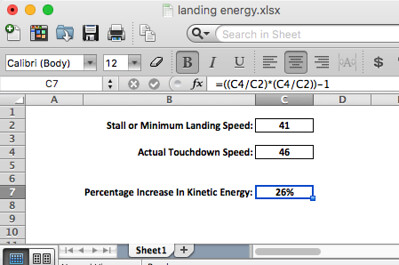Landing accidents are, I believe, the largest fraction of the entire accident portfolio.
Loss of control on the ground is the highest growing number of accidents and incidents right now.
Landing too fast and flat, guess what happens when a small gust comes along and most of the aircraft weight is still being removed by a mostly flying wing, Peter?
If you can’t get comfortable slow, or your instructor won’t demand it, you’re headed for being the next number in that statistic as you go bouncing off into the grass or break the nose gear.
Get that bad habit nipped Peter. It’ll become your first accident.
When training was hot and heavy at the home ‘drome by young CFIs and students recently, a weekly off roading excursion or more was becoming an epidemic. Numerous aircraft damaged because neither would slow down to land properly.
Also take a hard look at your POH and the data on stall speed change by W&B as well as the calibrated airspeed table. Then tell me exactly how many knots you have to lose indicated from the book approach speed until touchdown.
If you were touching down too fast I would tell you to keep it flying... don’t land yet... and on centerline until it slowed and then say “see how much better that landing was? I want you landing that slow right there.”
Then practice a few more so you can feel the controls becoming less effective as you slow (use more control deflection), the sink rate change in your butt (judge the altitude and flare height better, add a tiny burst of power to arrest if needed in gusts), see the nose start to try to not stay in line with the runway as the rudder authority fades (push it to the floor if you need it. If that isn’t enough, go around.), and the airplane start to drift off centerline as groundspeed slows (change that bank angle, touch down on the upwind main if needed and hold it there with aileron tracking straight with even more rudder).
And then keep coming with all controls except rudder all the way to the stops as the landing rollout continues. Fully deflected for wind for taxi unless something dictates otherwise. Always follow through.

